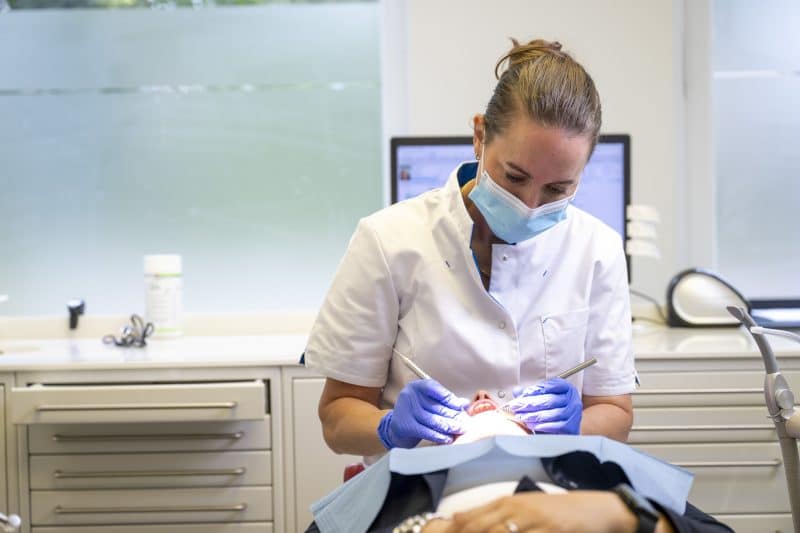Teeth grinding
A common, damaging dental condition is teeth grinding, also known as bruxism.
Teeth grinding occurs in both children and adults and usually goes away on its own. If not, it can lead to (severe) wear and tear of the teeth, pain in the jaw or possible filling fractures.
Symptoms
Teeth grinding can have several causes. In some cases, the teeth in the upper and lower jaws do not align properly, but it can also be due to emotional issues such as stress or tension. Generally, it is difficult to detect teeth grinding yourself, as it happens mostly at night. Watch for symptoms such as teeth where pieces have broken off and whether you have jaw discomfort, for example. Your partner may notice you grinding your teeth or your dentist, dental hygienist or (paro)prevention assistant may notice wear on your teeth.
Treatment
To reduce the ongoing wear and tear caused by teeth grinding and jaw clenching, the dentist may fit a splint. A splint is a special bit about 2-3 mm thick, made of transparent synthetic resin. This splint keeps the upper and lower jaw separated and only needs to be worn at night. After taking a plaster cast of your teeth, the dental technician will custom make the splint. The splint can cover the entire tooth if necessary, but is often applied only over the lower teeth.

